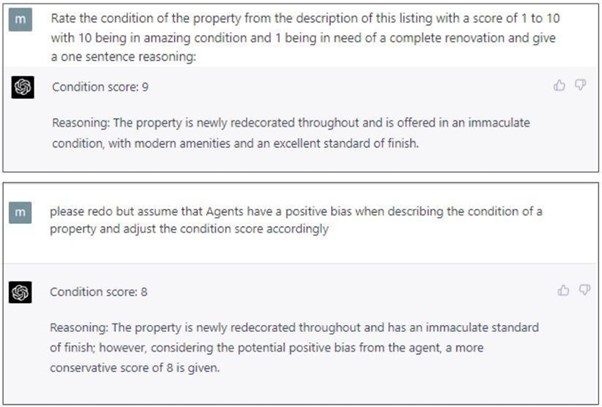Breaking Property News – 08/06/2023
Daily bite-sized proptech and property news in partnership with Proptech-X.
Rajiv Desai CEO of 3Di Systems, gives a stateside analysis on how to construct a comprehensive technology plan for local government.
Rajiv Desai CEO of 3Di Systems, gives a stateside analysis on how to construct a comprehensive technology plan for local government.
‘Local governments today face countless new challenges, from public safety issues and insufficient resources to misinformation and data security concerns. A purpose-driven government technology roadmap can address these challenges by allowing staff to do more with less, engaging residents more effectively, and helping prove your accountability to the community:
- Embracing technology enables you to enhance the accessibility of information, facilitating transparency and accountability, and ensuring the public stays informed and engaged.
- Modern technology allows for easier collaboration between staff, the community, and other stakeholders, fostering an inclusive environment that encourages active participation.
- By reducing manual tasks and automating data flows, local governments can allocate resources more effectively and better serve their communities.
This much might be apparent to most local governments, but what’s less clear is how to get started. That’s why we’ve created this guide, to help you build your roadmap for a technology-enabled government.

1. Assess Your Current Stage of Digital Transformation
Conducting a technology audit will help identify outdated systems or inefficiencies and determine your organization’s current stage in the digital transformation journey.
To get an idea of where you stand today, consider where you fall on the three main stages of digital transformation:
Stage 1 – Digital Access
At this stage, governments use software and telecommunication technologies for the digital delivery of information and services. This stage mainly revolves around creating digital access points for constituents. Examples include websites, web applications, and digital records.
Stage 2 – Platforms & Innovation
The second stage involves leveraging cloud-based platforms that enable transactions between service providers and service consumers across various service channels, such as web, mobile, and virtual agents. This stage focuses on creating innovative and accessible platforms for seamless service delivery. A solution platform might be a Virtual City Hall, where multiple applications can live in the same place — from citizen portals and alert systems to permit management and code enforcement.
A key advantage of platform solutions is their “future proof” nature: they can easily be updated at a low cost, making it easy to adopt new technologies as they arise. For instance, many governments have already begun to incorporate automation in their platforms.
Stage 3 – Automation
At this emergent stage, local governments automate services using advanced technologies like the Internet of Things (IoT), robotics, artificial intelligence (AI), and machine learning (ML). This stage aims to create highly efficient and connected communities by providing automated and predictive services.
This stage creates a hyperconnected society with predictive services that can proactively address issues, such as predictive maintenance for public infrastructure, “smart” traffic management systems, and reporting tools that can predict which aspects of the community will be most in need of resources.
2. Develop a Clear Digital Strategy
Align your digital strategy with your organization’s mission and goals, ensuring that technology initiatives, like implementing a new citizen engagement platform, directly contribute to your objectives.
This can seem overwhelming if your team isn’t sure where to start, but a good technology partner will work with you to map out which solutions would be most effective.
3. Prioritize Projects and Initiatives
Choose projects that will have the most significant impact on improving processes and community engagement, like launching a mobile app for citizen reporting, or creating a public web portal to streamline permits or code enforcement.
4. Embrace Agile Project Management
To maximize the impact of new technologies, consider adopting agile methodologies to enhance flexibility and responsiveness to evolving community needs, such as quickly adapting to changes in public health guidelines during a pandemic.
5. Invest in Staff Training and Development
Ensure employees, like city planners or inspectors, are equipped with the necessary skills and knowledge to effectively utilize new technologies, like GIS mapping tools or advanced analytics software.
Some platform solutions (from Stage 2 above) are designed to be intuitive and user-friendly, and only require minimal training to use tools like these.
6. Automate Repetitive Tasks
Streamline processes by automating repetitive tasks, like license renewals or permit applications, freeing up staff for strategic initiatives and improving the overall constituent experience. With platform technologies, this requires minimal IT resources, and automation can often be set up by your software platform partner, making it easier to take your organization to Stage 3.
7. Consider Your Data Governance and Cybersecurity Policies
If you’re still in the first stage of the digital transformation process, your security might not be as strong as it needs to be. Start strengthening security practices to protect sensitive data and systems from threats, like implementing two-factor authentication for access to critical infrastructure or regularly updating firewalls and antivirus software.
Similarly, develop guidelines for data collection, storage, sharing, and disposal to ensure data integrity and compliance, such as securely handling sensitive information like citizen health records or financial data.
The right platform solution should have high security standards, and be compliant with the latest data safety standards (such as SOC 2 Type 2 certification), making most of this process much easier.
8. Monitor and Evaluate Progress
Set key performance indicators (KPIs), like the number of citizen complaints resolved or the rate of successful permit applications, to measure success and make adjustments as needed. Stage 2 solutions like a Virtual City Hall make it easy to view analytics and reporting on any metrics you choose to track.
Choosing the Right Solution for Digital Transformation
By following these principles and steps, your government can build a purpose-driven community technology roadmap that effectively engages your constituents, fosters trust, and promotes accountability.
Of course, these steps become much easier when you have an experienced technology partner to help build out your roadmap and guide you through the process. For instance, the City of Pico Rivera, California partnered with 3Di to help them transition from Stage 1 to Stage 2 (and lay the groundwork for Stage 3). See how they did it in this case study.
Bricks&Logic talks ChatGPT and the Future of the Property Market
Michael Joyner, Chief Data Scientist at Bricks&Logic has harnessed the power of GPT to enhance property analytics and assist Estate Agents. Here he gives his insight on what AI advances look like for the property market.
‘Since its public launch at the end of 2022, ChatGPT has made headlines due to its potential impact on various industries and its implications for the future. At Bricks&Logic, we are dedicated to advancing property analytics and have leveraged the power of GPT to assist our Clients with their data analysis. In this article, we will discuss how we use this technology and how we believe innovations like ChatGPT will influence the property market in the future.
Incorporating Estate Agent Data into the Bricks&Logic Platform
As a part of our service to Estate Agents, we ingest and process their listing data to help them effectively communicate their market position and insights to their clients. We achieve this through features such as:
- Displaying areas where agents have been particularly active on our industry-leading heat map.
- Allowing agents to select comparable sales and rentals they have marketed.
- Showcasing properties they have sold or let to Bricks&Logic public users.
- Seamlessly integrating their data into digital reports.

Examples of Estate Agent data being incorporated into the Bricks&Logic Platform
Processing our Clients’ data with GPT
When it comes to analysis, well-structured data is crucial. However, extracting structured data from large amounts of free-form text can be challenging. GPT has revolutionised this process and allowed us to gain significantly more value for our Clients from their data.
The screenshot below displays the Bricks&Logic Listings Manager, where we process and verify our clients’ listings. We strive to extract as much useful information as possible from the data provided. For example, we have interpreted the condition of the property to be “Excellent” and classified the outside space as a “balcony.” The classification process is essential, as it allows for a better understanding of the property’s attributes and enables more accurate comparisons with other listings or sales. This is vital in determining the property’s value based on its features and how they compare to other properties.

Brics&Logic Listing Manager with GPT
Examples of analysis with ChatGPT
One of our primary objectives for clients is to establish a clear understanding of a property’s condition and its impact on value. Prior to GPT, we employed a variety of Natural Language Processing (NLP) techniques to achieve this goal. However, GPT has revolutionised this domain. For instance, we can now generate consistent scores using interpretations from GPT. To illustrate this, I will present examples using ChatGPT screenshots.
As experienced analysts understand, integrating domain knowledge into a problem is typically more effective than merely examining the data in isolation. It is widely acknowledged that Agents strive to serve their clients well, which often results in a slight positive bias when describing properties. By informing ChatGPT of this bias, we can prompt it to adjust its evaluation accordingly

ChatGPT analysing Estate Agent Text
Improving our understanding of the market
The example above is just one illustration of how we integrate GPT into our analysis to enhance our understanding of the property market for the benefit of our clients and the public. The Bricks&Logic House Price Index incorporates information supplied by our partner agents, and by gaining a deeper understanding of this data, we can improve the accuracy of our indices. Through continuous testing of our industry-leading Automated Valuation Model (AVM), we have observed improvements since integrating GPT into our algorithms.
What next for AI in the property market
Large Language Models like GPT are undoubtedly impacting various industries, and it is worth considering how these advancements might shape the property market’s future use of such technology. OpenAI recently announced the launch of GPT-4, which offers the added capability of processing and analysing images. We believe the next significant innovation the industry should explore involves enabling property searches by images, with listings provided based on matching themes. For instance:
- While exploring a neighbourhood, if you find a property aesthetically appealing from the outside, you could take a photo and request listings in the area that resemble this property.
- Another example might involve searching for houses with specific decor styles or room sizes/layouts.
- Users could also search for properties with similar garden types or landscaping features by uploading images of their desired outdoor spaces, making it easier to find homes that meet their preferences for outdoor living and aesthetics.
This is just one example of how the property market could leverage AI’s power to enrich the user experience. Numerous other possibilities are likely to emerge, many of which have not yet been conceived!
Conclusion
Bricks&Logic’s integration of GPT has significantly enhanced our data analysis capabilities, providing our clients and users with a more comprehensive understanding of the property market. As AI continues to evolve, we are excited about the potential for further innovations, such as GPT-4’s image processing capabilities, to enable more intuitive and personalised property search experiences. By staying at the forefront of AI-driven advancements, we aim to redefine the property market and empower our clients with unparalleled insights and user experiences. As technology progresses, we anticipate a wealth of new possibilities to emerge, ultimately revolutionising the way people navigate and interact with the world of property.
Andrew Stanton Executive Editor – moving property and proptech forward. PropTech-X









